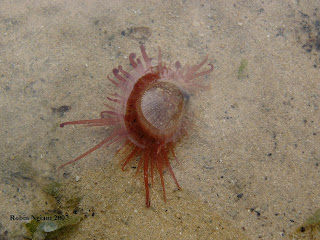I remember a rather horrifying encounter with a dragonfly when I was very young.
I was a five year old kid visiting my grandma’s in a kampong in Malaysia. We were sitting at the dinning table when my uncle approached me with a gift. As he opened his fist, a huge back dragonfly suddenly flew into my face. It gave me a fright!! To make matters worse, he was holding a string tied to its abdomen and so the flying ‘monster’ was zipping all over me and the dining table. In an instant there was complete chaos as the dragonfly crashed into everyone and right into the dishes scattering all the food. It finally demised in a bowl of hot soup and my uncle got an earful from my relatives.
Now I’ve re-acquainted with the dragonflies and developed an immense liking for their beauty.
Dragonflies come in all colours imaginable. Their zipping and hovering flight are a delight to watch. They play an important role as indicators of environmental disturbances and many consider them a indicator species in streams and marshy habitats.

Male

Female
Nannophya pygmaea is one of the smallest dragonfly in the world. The adult male is bright red and will defend a small territory of only about one metre square. An interesting study on its territorial mating behaviour revealed that variations in male mating success is correlated more to the number of sunny days and less on male size.
Singapore’s plan to transform its concrete canals into landscaped channels has brought odonates into the forefront among local naturalists. There is now an initiative to study and update the status of Odonata in urbanised S’pore.
For me, this old song from 小虎队 best sums up the dragonflies.
飞呀飞呀
看那红色蜻蜓飞在蓝色天空
游戏在风中不断追逐它的梦
天空是永恒的家大地就是它的王国
飞翔是生活
我们的童年也像追逐成长吹来的风
轻轻地吹著梦想慢慢地升空
红色的蜻蜓是我小时候的小小英雄
多希望有一天能和它一起飞
当烦恼越来越多玻璃弹珠越来越少
我知道我已慢慢的长大了
红色的蜻蜓曾几何时
也在我岁月慢慢不见了
我们都已经长大好多梦正在飞
就像童年看到的红色的蜻蜓
我们都已经长大好多梦还要飞
就像现在心目中红色的蜻蜓
Pictures taken at: Western part of Singapore, February 2007.
References:
Orr, A. G., 2003. A Guide to the Dragonflies of Borneo. Their Identification and Biology, Natural History Publications (Borneo) Sdn. Bhd, Malaysia.
Orr, A. G., 2005. Dragonflies of Peninsular Malaysia and Singapore, Natural History Publications (Borneo) Sdn. Bhd, Malaysia.
Tsubaki, A. & T. Ono, 1987. ‘Effects of age and body size on the male territorial system of the dragonfly, Nannophya pygmaea rambur (Odonata: Libellulidae)’, Animal Behaviour, vol. 35 (2), pp. 518-525.



